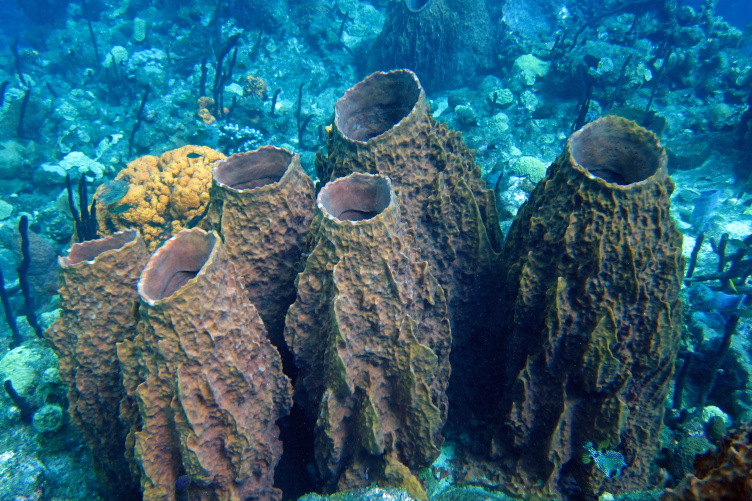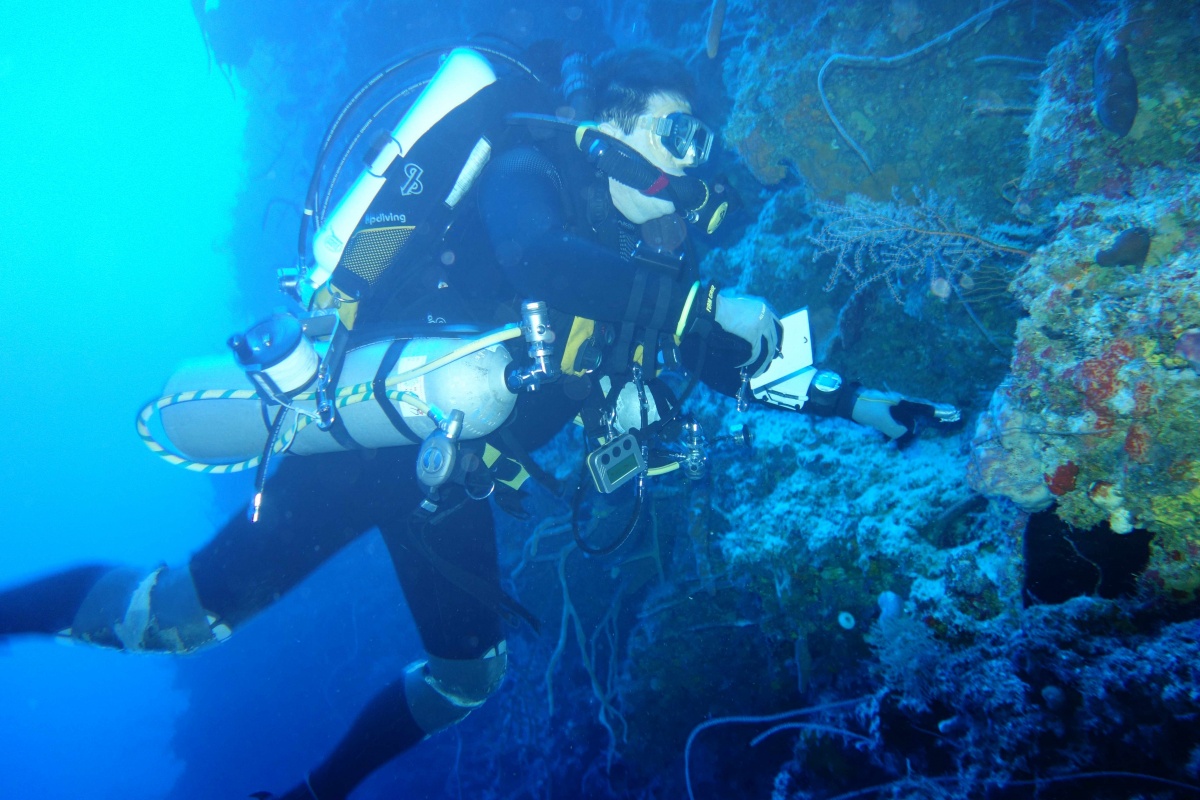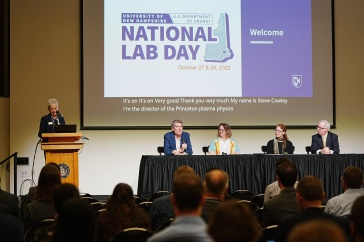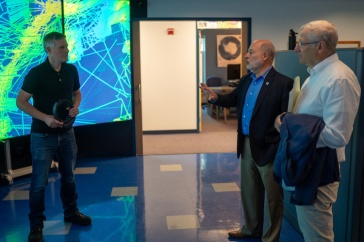
UNH researchers will study how sponges, the less charismatic neighbors of corals, contribute to overall coral reef health. (Photo: Dr. Deb Gochfeld, University of Mississippi)

With their stunning beauty, incredible diversity and headline-grabbing demise due to bleaching, coral reefs are to tropical climate change impacts what polar bears are to the Arctic. Now, with two National Science Foundation grants, UNH researchers are exploring how sponges, the less charismatic but essential reef neighbors of corals, contribute to overall coral reef health.
“Sponges are incredibly interesting but they’re not well studied,” says lead researcher Michael Lesser, a research professor in the Department of Molecular, Cellular and Biomedical Sciences, adding that sponges are more than 600 million years old. “How does a very ancient, simply designed organism maintain its existence through geological time and become such an important component of modern reefs?”
With the grants, which total more $2.2 million over three years, Lesser and colleagues from UNH hope to shed new light on sponges from the Caribbean: The function of the microbes that live in symbiosis with them, and how sponges at varying depths function differently.
“Like the human microbiome, understanding the sponge micobiome may be the key to understanding their ecology and biodiversity.”
To study the sponge microbiome — the collection of bacteria and microbes that live within them — Lesser and his team will collect samples of up to 150 sponge species from four Caribbean locations: Belize, Curacao, the Cayman Islands and Florida. They’ll explore the microbiome’s co-evolution with the sponge host.
“We’re looking at the relationship of the microbiome with the host and how that might affect the roles sponges play in coral reef health,” says Lesser. “Like the human microbiome, understanding the sponge micobiome may be the key to understanding their ecology and biodiversity.”
Lesser will tap the expertise of molecular biologist Matt MacManes and evolutionary biologist David Platcheski, both assistant professors in the department of molecular, cellular and biomedical sciences. “They bring unique tools to the field,” Lesser says. “I think they were the tipping point for us getting this funding.” Kathy Morrow, a postdoctoral researcher in Lesser’s laboratory and co-principal investigator on the grant, brings additional expertise to characterize the microbiome using next-generation high-throughput sequencing.
The other study, separate but intertwined, will take a literal deep dive to study sponge populations on what’s called mesophotic coral reefs, those found at depths from 30 meters (about 100 feet) to 150 meters (about 490 feet). They’ll examine how these deep-water sponges utilize food sources compared to those in waters as shallow as three meters. “These differences may help explain why sponge biodiversity and growth rates increase with depth,” Lesser says.

Such deep-water sponges represent “a largely unexplored area,” he says, because of the complexity and potential danger of SCUBA diving to such depths. For this work, Lesser, along with longtime collaborators Marc Slattery and Deb Gochfeld from the University of Mississippi as well as UNH diving program officer Liz Kintzing, will use an apparatus known as a closed-circuit rebreather, adapted from military and commercial diving and used by only a handful of scientists. The very efficient SCUBA substitute lets the researchers stay at great depths longer and recover more quickly.
“Using this technical diving, you can actually put your face right into the reef at 300 feet,” Lesser says.
While coral reefs, often called the tropical rainforests of the sea, may attract more attention, Lesser says the time is right to take a closer look at the role of sponges on those reefs. There’s evidence that as corals continue to decline in abundance, “sponge reefs” might take their place.
“We’ve been so focused on corals, and yet now here we are in a new era of human-induced changes where this group of organisms, sponges, might emerge as a dominant species, and we’re playing catch-up,” he says. “Plus, any organism that’s lasted as long as sponges has got a winning solution. Homo sapiens should be so lucky.”
The sponge microbiome work is funded by the NSF’s Dimensions of Biodiversity program; the NSF’s Biological Oceanography program is funding the mesophotic sponges study.
-
Written By:
Beth Potier | UNH Marketing | beth.potier@unh.edu | 2-1566



















































